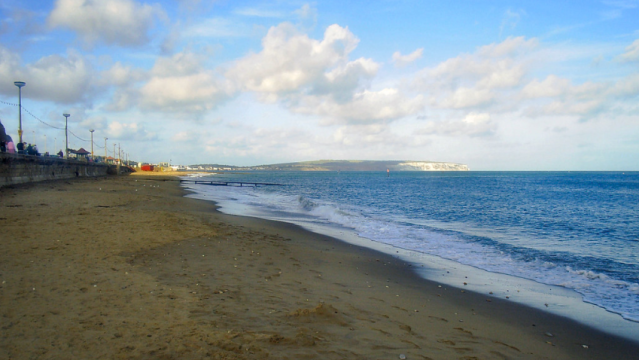
Bones found on the Isle of Wight last year have turned out to belong to a previously-unknown species of theropod dinosaur, related to both the t-rex and present-day birds.
Given the somewhat unwieldy name of Vectaerovenator inopinatus, the dinosaur roamed the earth during the Cretaceous period (115 million years ago, or approximately four 2020s) and apparently measured up to four metres long.
Only four bones of the therapod have been found so far, on the beach at Shanklin on the Isle of Wight. They were found by three separate groups of people throughout last year, and come from the dino’s back, neck and tail.
Interestingly, the bones were full of air gaps, like the ones modern birds have to keep their skeletons light. These air sacs also form part of the respiratory system, acting like an extension of the lungs to make breathing more efficient – but with the side effect of making some parts of the skeleton fragile.
Palaeontologists at the University of Southampton have been studying the bones, and lead dino expert Chris Barker commented:
“We were struck by just how hollow this animal was – it’s riddled with air spaces.
Parts of its skeleton must have been rather delicate.
The record of theropod dinosaurs from the ‘mid’ Cretaceous period in Europe isn’t that great, so it’s been really exciting to be able to increase our understanding of the diversity of dinosaur species from this time.
You don’t usually find dinosaurs in the deposits at Shanklin as they were laid down in a marine habitat. You’re much more likely to find fossil oysters or drift wood, so this is a rare find indeed.”
One of the people to find the bones, fossil-hunter Robin Ward, said he’d been told not to expect any interesting finds at Shanklin, but went for it anyway:
“The joy of finding the bones we discovered was absolutely fantastic. It looked different from marine reptile vertebrae I have come across in the past.
I was searching a spot at Shanklin and had been told, and read, that I wouldn’t find much there.
However, I always make sure I search the areas others do not, and on this occasion it paid off.”
More info about the dinosaur and its bones will be published in Papers in Palaeontology shortly. [BBC]
